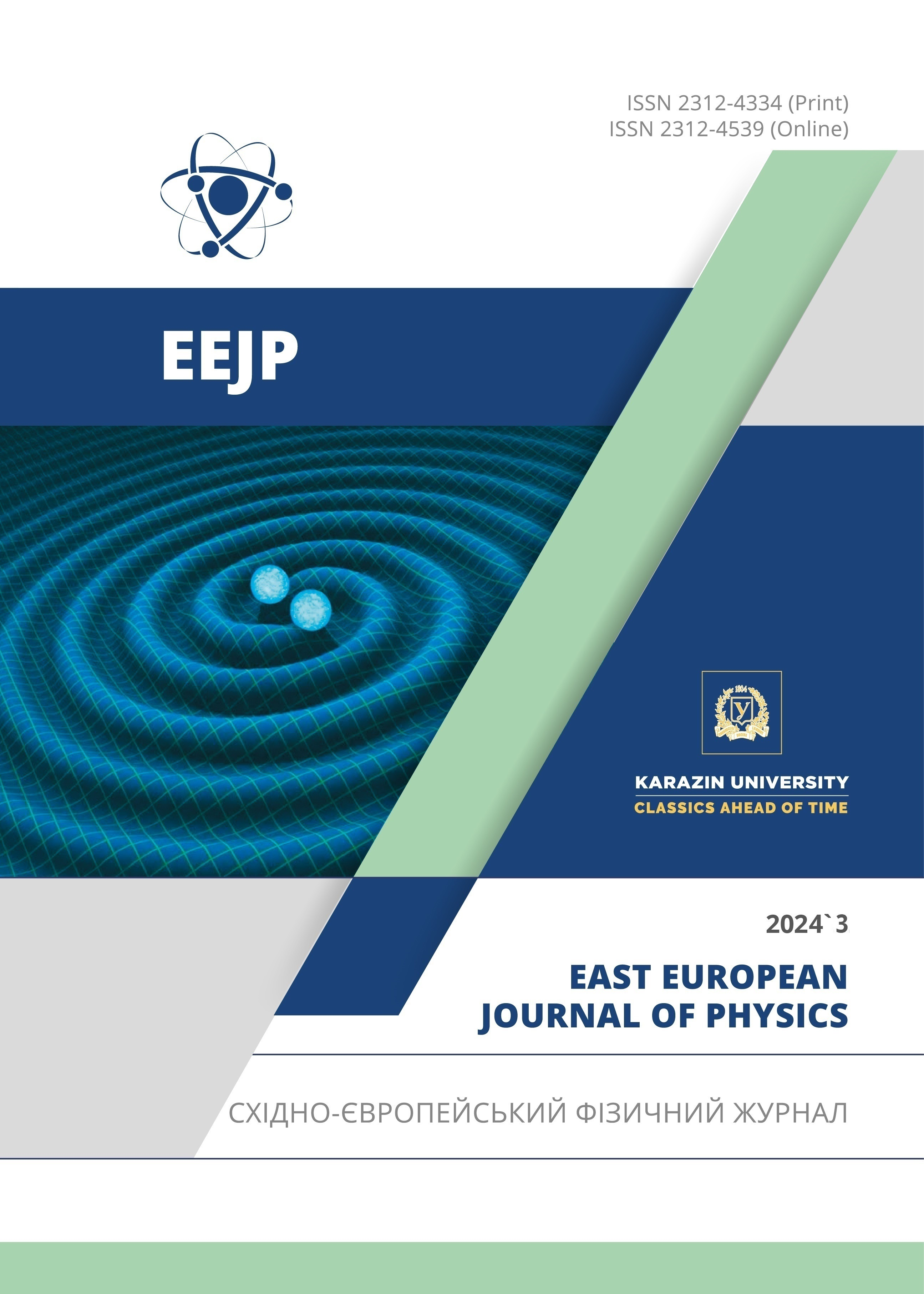Impact of Temperature, Irradiation Duration on Performance of Organic/Ru-Dye/Inorganic Solar Cells
Abstract
This study investigates the impact of ambient conditions on the performance of P3HT/Ru-dye/nc-TiO2 solar cells (TLSCs). It has been found that the increase of temperature and irradiation duration affect on the parameters of TLSCs. When the temperature was increased from 293 k to 393 k , the short circuit current density (Jsc ) and open circuit voltgae (Voc) decrease from 2.2 to 1.7 mA/cm2 and 0.7 V to 0.5 V respectively. That is attributed to the effect of high temperature on recombination of photo-generated charges and reduction of shunt resistance (Rsh ) in the TLSC. Moreover, we also present the effect of irradiation duration on performance of the TLSCs. The measurement reveals that Jsc decreased by 0.5 mA/cm2 while Voc decreased by ~ 0.18 V during 4800 s illumination. This decrease suggests the filling of traps or defects at the interface with photo-genertated charges. Finally, the maximum output power of TLSCs dropped by almost half within 6 days during a 20-day test because of affecting atmosphere moisture on the interface properties between dye/ nc-TiO2 and P3HT.
Downloads
References
R. Gahlot, S. Mir, and N. Dhawan, Energy Fuels. 36, 14554 (2022). https://doi.org/10.1021/acs.energyfuels.2c02847
H. Al-Dmour, S. Al-Trawneh, and S. Al-Taweel, Int. J. Adv. Appl. Sci. 8(6), 1 (2021). https://doi.org/10.21833/ijaas.2021.06.015
K. Sharma, V. Sharma, and S.S. Sharma, Nanoscale research letters, 13, 381 (2018). https://doi.org/10.1186/s11671-018-2760-6
S. Taweel, S.A. ltrawneh, H. Al Dmour, O. Al Gzawat, W. Alhalasah, and M. Mousa, Heliyon, 9, 1 (2023). https://doi.org/10.1002/anie.202302753
K. Altola, G. Gave, M. Markkanen, J. Jaqueline, and P. Lunda, Solar Energy, 237, 264 (2022). https://doi.org/10.1016/j.solener.2022.03.060
H. Al Dmour, and M. Taylor, J. Ovonic. Res. 19, 587 (2023). https://doi.org/10.15251/JOR.2023.195.587
N. Mohenzadehan, A. Nouri, and M. Mohammadi, 25, 3210 (2023). https://doi.org/10.1039/D3CE00126A
A. Sławek, Z. Starowicz, and M. Lipiński, Materials, 14(12), 3295 (2021). https://doi.org/10.3390/ma14123295
E. Chahid, M. Lotfi, and O. Lotfi, IJPEDS, 2, 1772 (2021). http://doi.org/10.11591/ijpeds.v12.i3.pp1772-1783
H. Al Dmour, East Eur. J. Phys, (3), 555 (2023). https://doi.org/10.26565/2312-4334-2023-3-65
A. Pirashanthan, T. Kajana, D. Velauthapillai, Y. Shivatharsiny, S. Bentouba, and P. Ravirajan, Nanomaterials, 12, 820 (2022). https://doi.org/10.3390/nano12050820
L. Shaker, A. Al-Amiery, M. Hanoon, W. Al-azzawi, and A. Kadhum, Sustainable Energy Research, 11, 6 (2024). https://doi.org/10.1186/s40807-024-00100-8
L. Huang, and B. Zahang, Nat. Commun. 14, 124 (2024). https://doi.org/10.1038/s41467-023-36937-8
J. Nelson, The physics of solar cell, (Imperial College Press, 2003).
H Al-Dmour, Eur. J. Phys, (2), 445-449 (2024). https://doi.org/10.26565/2312-4334-2024-2-58
J.C. Nolasco, A. Castro-Carranza, Y.A. León, C. Briones-Jurado, J. Gutowski, J. Parisi, and E. von Hauff, Solar Energy, 184, 610 (2019). https://doi.org/10.1016/j.solener.2019.04.031
H. Al Dmour, R. Alzard, H. Alblooshi, K. Alhosani, S. Al-Madhoob, and N. Saleh, Front. Chem. 7, 561 (2019). https://doi.org/10.3389/fchem.2019.00561
Copyright (c) 2024 Hmoud Al-Dmour

This work is licensed under a Creative Commons Attribution 4.0 International License.
Authors who publish with this journal agree to the following terms:
- Authors retain copyright and grant the journal right of first publication with the work simultaneously licensed under a Creative Commons Attribution License that allows others to share the work with an acknowledgment of the work's authorship and initial publication in this journal.
- Authors are able to enter into separate, additional contractual arrangements for the non-exclusive distribution of the journal's published version of the work (e.g., post it to an institutional repository or publish it in a book), with an acknowledgment of its initial publication in this journal.
- Authors are permitted and encouraged to post their work online (e.g., in institutional repositories or on their website) prior to and during the submission process, as it can lead to productive exchanges, as well as earlier and greater citation of published work (See The Effect of Open Access).








